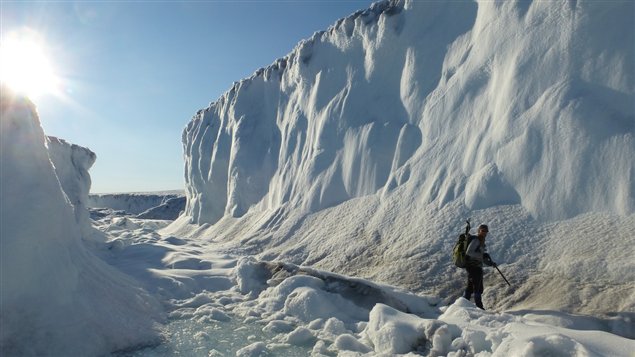Each week, Eye on the Arctic features stories and newsmakers from across the North
The last fully intact ice shelf on northern Ellesmere Island in Canada’s Arctic may soon be slipping away.
Ice shelves found in the island’s North are formed from sea ice and glacier ice and measure some 100 metres thick.
While other ice shelves nearby have long since broken up, the Milne ice shelf remained intact blocking the mouth of the Milne Fjord.
Cracks and fractures
But this year, scientists have noticed fractures to the Milne ice shelf that indicate it may be reaching the end of its life cycle.
“It’s become a maze or a network of many different crevasses which very much indicates that the ice shelf is reaching its structural integrity limit,” says Andrew Hamilton, a Ph.D candidate at the University of British Columbia in Vancouver, Canada, who studies the Milne ice shelf.
“In the coming years it will most likely continue to break up and eventually float away as ice bergs or ice islands into the Arctic ocean.”
To find out more about what’s happening and what it can tell us about the changing North, Eye on the Arctic’s Eilís Quinn spoke to Andrew Hamilton about his findings.
ListenRelated Links:
Ellesmere Island – Environmental Fluid Mechanics Research Group
Environmental Fluid Mechanics Research Group – University of British Columbia







For reasons beyond our control, and for an undetermined period of time, our comment section is now closed. However, our social networks remain open to your contributions.